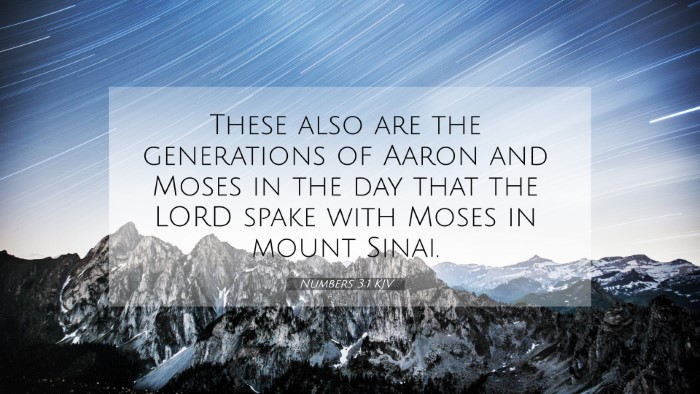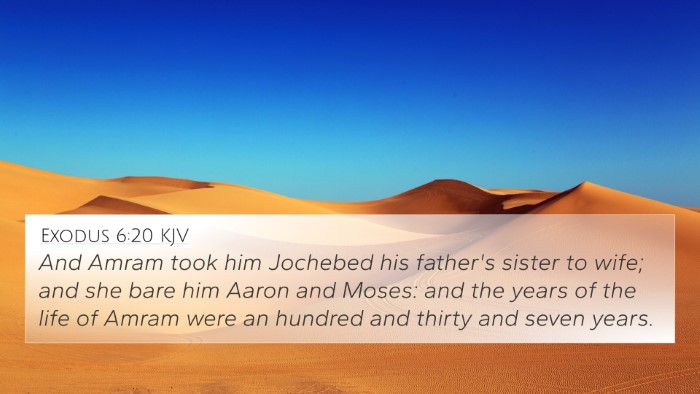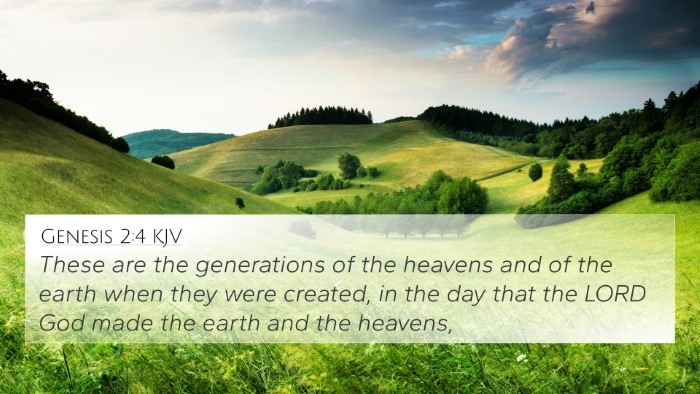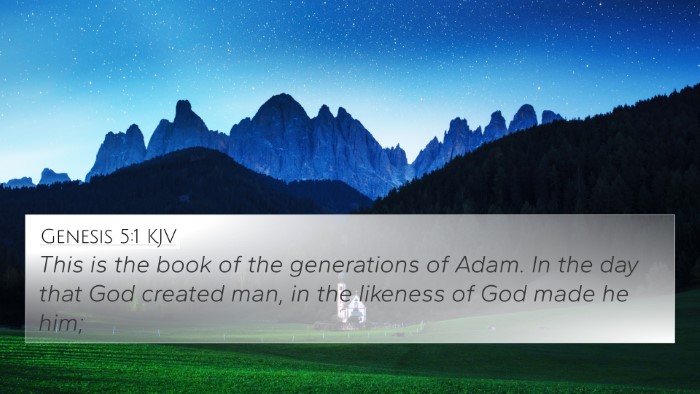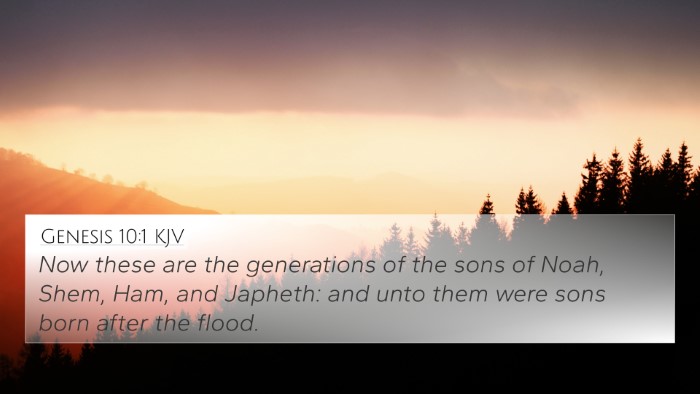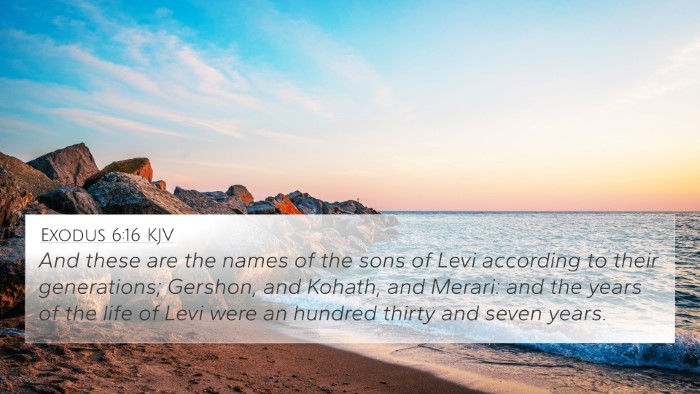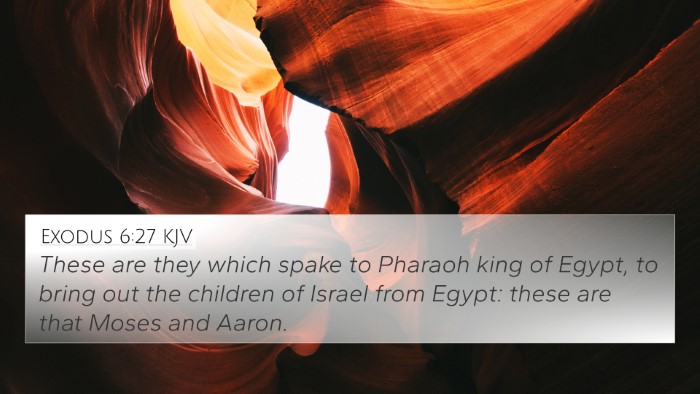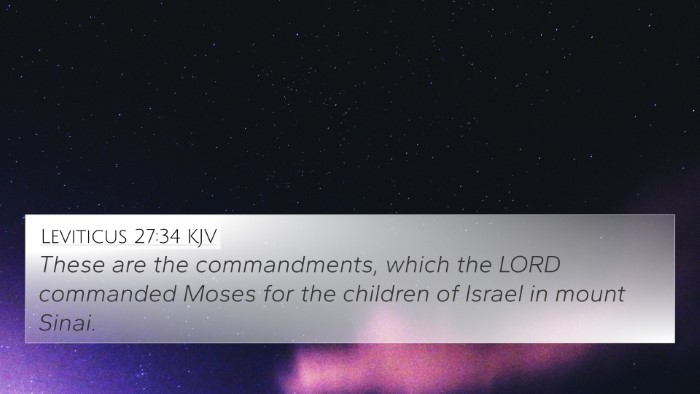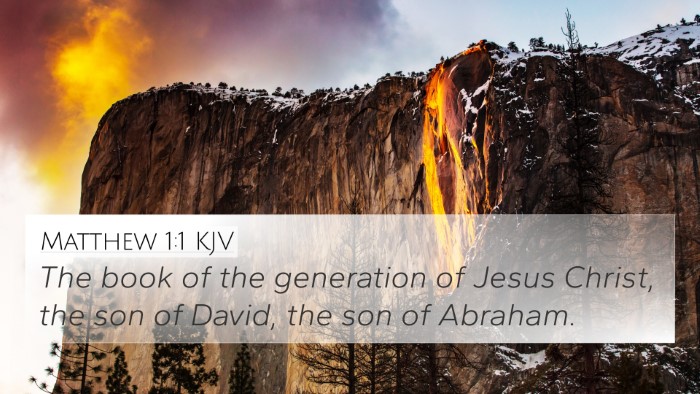Understanding Numbers 3:1
The verse Numbers 3:1 reads: "These also are the generations of Aaron and Moses in the day that the LORD spake with Moses in mount Sinai." This verse serves as a pivotal introduction to the genealogical records that follow, particularly concerning the Levitical priesthood.
Contextual Significance
It is crucial to understand the historical and theological context of this verse. It comes right after the instructions given by God about the duties and organization of the Israelites, particularly the Levites. This sets the stage for defining the roles of Aaron's descendants and establishing the priestly lineage, which is key in the sacrificial system and the worship practices that would follow.
- Matthew Henry: He emphasizes the importance of records in Scripture, seeing them as a testament to God’s faithfulness in leading His people across generations.
- Albert Barnes: He points out that this genealogy shows that God’s plan included specific roles for families within Israel, highlighting God’s order in society.
- Adam Clarke: He notes that this verse marks a transition, highlighting significant moments when God communicated with Moses, thus underscoring the importance of divine instruction in salvation history.
Bible Verse Cross-References
To better grasp Numbers 3:1, it is insightful to explore cross-references that reveal its interconnectedness with other scriptures. Here are several key references:
- Exodus 28:1: This verse calls Aaron and his sons for priesthood, linking to the responsibilities mentioned in Numbers 3:1.
- Leviticus 8:1-2: Further elaborates on the unique calling of Aaron and his descendants in religious duties.
- Hebrews 7:11: Discusses Jesus as the ultimate High Priest from a different order, deepening understanding of priesthood lineage.
- Numbers 1:1: Establishes the context of God speaking to Moses, reflecting the continuity of divine communication.
- 1 Chronicles 6:1-15: A genealogy of the Levites reaffirming the importance of Aaron's lineage.
- Malachi 2:4-7: Speaks to the covenant of Levi, tying historical roles to theological significance.
- Matthew 1:12: Traces the lineage of Jesus back to David, emphasizing the intricate connections of God’s plan throughout scripture.
Thematic Connections
The connections between Bible verses regarding priesthood, obedience, and divine communication are paramount. These verses echo the themes of covenant, faithfulness, and God’s continued guidance over His people.
Comparative Analysis
A comparative study can yield greater insights into the biblical theme of leadership and mediation. Numbers 3:1 serves as an entry point into understanding how God orchestrated religious structure among the Israelites. Thus, it facilitates further exploration into:
- Inter-Biblical dialogues about priesthood.
- Thematic analyses of sacrificial systems.
- Implications of priestly duties in the New Testament.
Tools for Bible Cross-Referencing
Utilizing tools such as a Bible concordance or a Bible cross-reference guide can significantly enhance your study experience. By employing systematic methods for cross-referencing, readers can uncover deeper theological meanings and connections among scriptures.
Conclusion
Numbers 3:1 encapsulates a vital moment in biblical history where God establishes a crucial element of Israel's identity and worship. By examining this verse alongside various related scriptures, believers gain a richer understanding of how the Old Testament lays foundational truths that resonate throughout the New Testament and beyond.


